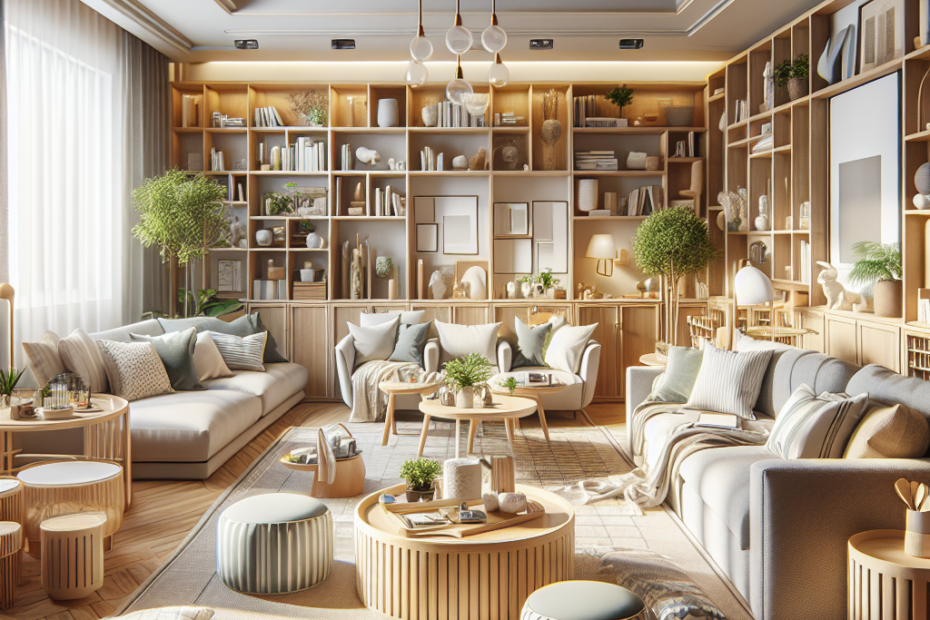The Best Ways to Arrange Furniture in Small Living Rooms
Many people live in small apartments or homes where living room space is limited. They often struggle to find the best ways to arrange their furniture to maximize space and create a cozy environment. According to a study by the National Association of Home Builders, the average size of new homes in the U.S. has decreased by 5% over the past 10 years, emphasizing the need for efficient space management. This blog post explores the best ways to arrange furniture in small living rooms, focusing on various strategies and designs to make the most out of limited space.
1. Optimize Vertical Space
One of the most effective strategies for arranging small living room furniture is to make use of vertical space. This means taking advantage of walls by adding shelves or high storage units. Floating shelves are excellent for holding books, ornaments, and even small plants. Additionally, wall-mounted TV units can save considerable floor space.
2. Choose Multi-Functional Furniture
When dealing with limited space, it’s crucial to select furniture that serves multiple purposes. An ottoman that doubles as a coffee table and storage unit or a sofa bed that turns into a guest bed at night can be very beneficial. This multi-functional furniture reduces clutter and makes the most out of the small living room area.
3. Use Light Colors and Mirrors
A well-known trick to make small spaces appear larger is to use light colors on the walls and furniture. Light shades reflect more light and make the room feel airy and spacious. Incorporating mirrors is another excellent approach, as they reflect light and create an illusion of a larger space.
4. Keep Pathways Clear
Ensuring there are clear pathways around the furniture is crucial. This not only makes the room look more organized but also ensures ease of movement. Keeping the middle of the room open by pushing furniture against the walls can significantly help.
5. Scale Down Furniture
In small living rooms, the size of the furniture matters. Opt for smaller furniture pieces that fit comfortably without overwhelming the space. For example, instead of a large sectional sofa, consider a loveseat or armless chairs which occupy less space without compromising on seating capacity.
| Strategy | Description |
|---|---|
| Vertical Space | Utilize walls for shelves or storage units. |
| Multi-Functional Furniture | Choose furniture pieces that serve more than one purpose. |
| Light Colors and Mirrors | Use light shades and mirrors to create an illusion of spaciousness. |
| Clear Pathways | Ensure there are clear pathways around the furniture. |
| Scale Down Furniture | Opt for smaller furniture pieces to avoid overcrowding. |
6. Create Zones
Dividing the living room into zones can be an excellent way to make it feel larger and more functional. Use rugs, furniture, or even different colors to delineate spaces such as a seating area, reading nook, or workspace.
7. Use a Focal Point
Arranging furniture around a focal point can make a small living room look well-organized and inviting. This focal point could be a fireplace, a striking piece of artwork, or a feature wall. From there, arrange the seating and other furniture to complement the focal point.
8. Limit the Number of Decorations
In a small living room, less is more when it comes to decorations. While it’s essential to add some personal touches, too many decorative items can create a cluttered look. Choose a few key pieces that reflect your style without overwhelming the space.
Key Takeaways
- Optimize vertical space by using walls for shelves and storage units.
- Select multi-functional furniture to maximize efficiency.
- Utilize light colors and mirrors to make the space appear larger.
- Maintain clear pathways to ensure ease of movement.
- Scale down furniture pieces to prevent overcrowding.
- Use rugs and furniture arrangements to create zones.
- Focus furniture around a central focal point.
- Limit the number of decorative items to avoid a cluttered look.
FAQ
- Q: What type of sofa is best for a small living room?
A: A loveseat or a small sectional sofa works well in limited spaces as they provide ample seating without taking up too much room. - Q: Can large furniture ever be used in small living rooms?
A: Large furniture can be used as long as it is multi-functional and proportionate to the room. Avoid overcrowding by selecting fewer but more versatile pieces. - Q: How do mirrors help in a small living room?
A: Mirrors reflect light and create an illusion of depth, making the room feel larger and more open. - Q: Are rugs useful in small living rooms?
A: Yes, rugs can help in creating defined zones within a small living room, making the space appear more organized and expansive. - Q: What colors should be used in small living rooms?
A: Light colors such as white, beige, and pastels are ideal as they reflect more light and make the room look more spacious.
By following these tips, everyone can make the most out of their small living rooms and create a cozy and functional space. Remember, the key lies in thoughtful furniture selection and clever space management. With the right approach, any small living room can become a stylish and comfortable haven.
